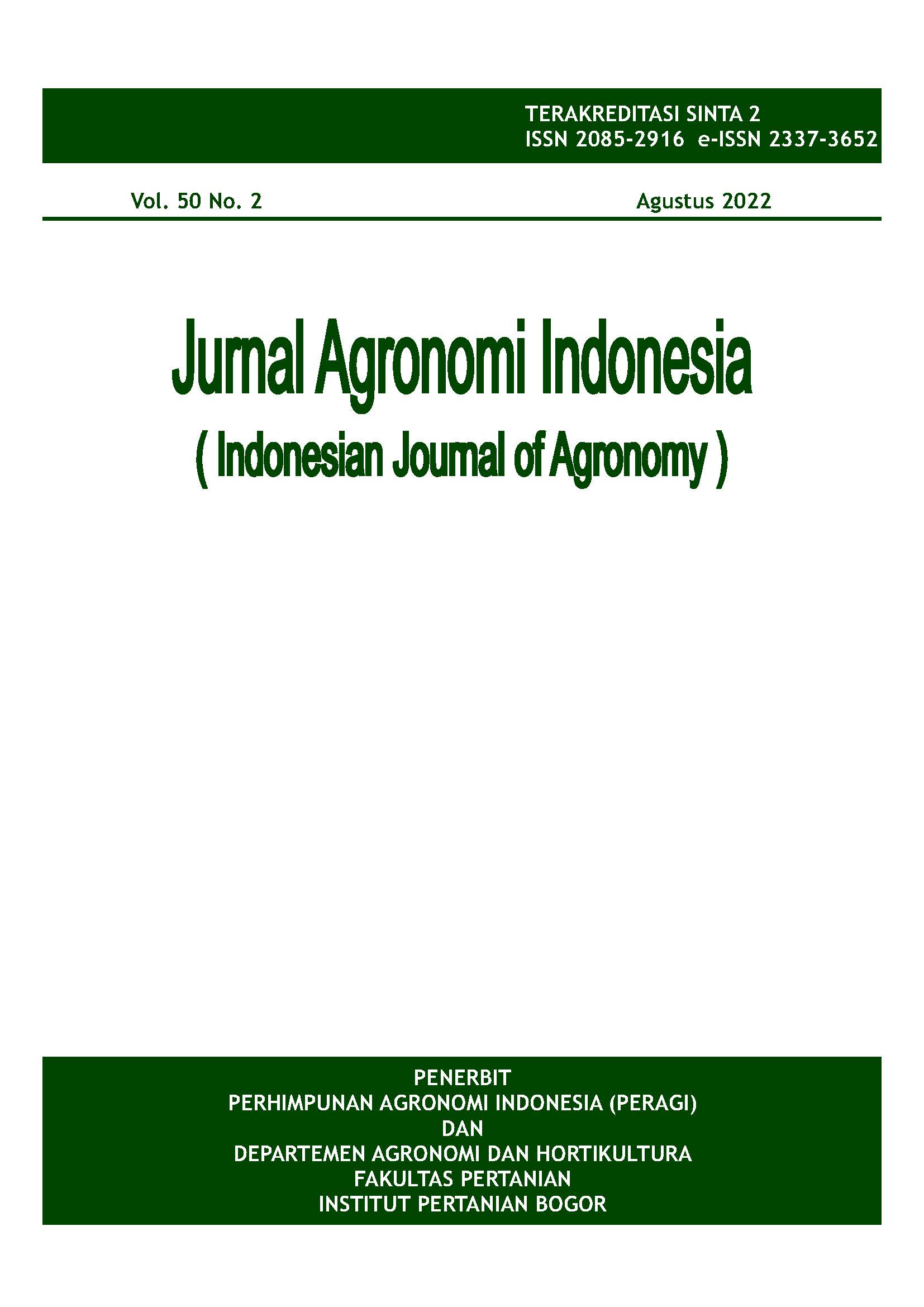Tobacco Plant (Nicotiana tabacum L.) Tolerance Towards Waterlogging Stress on Various Calcium Fertilizer Application
Abstract
Tobacco (Nicotiana tabacum L.) is one of the plantation crops with high economic value. High rainfall caused waterlogging and becomes a major obstacle in its cultivation. Many studies have shown that waterlogging affected the morphological, physiological, and anatomical responses. Calcium has an important role in helping the metabolic processes in plants under abiotic stress. Calcium application on tobacco improved their adaptation to waterlogging. This study aimed to determine the tolerance of tobacco under waterlogging stress with calcium application based on physiological, morphological, and anatomical responses. This research was conducted from November 2021 to January 2022 at the research trial site of Universal PT. Tempu Rejo using a factorial completely randomized design. The first factor was waterlogging treatment in tobacco plants at different growth stages (control; waterlogging at 21 days after planting (DAP), 28 DAP, and 35 DAP). The second factor was calcium application at different doses (0, 8.5, 10, and 11.5 g). The results showed that 11.5 g of calcium application was effective in enhancing plant tolerance toward waterlogging stress based on its morphological characteristics. This study showed that calcium inhibited the presence of H2O2 as ROS (reactive oxygen species) and function in maintaining the anatomical structure of roots and stomatal conductivity under waterlogging stress.
Keywords: anatomy, H2O2, morphological characteristics, physiology














